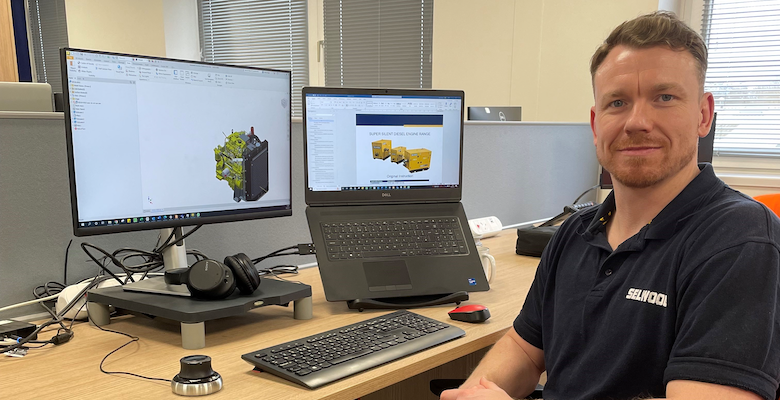May 3rd 2023
“During my time in the military, I completed an NVQ in mechanics and driver training, before joining the team at Selwood.” says Sean Ringer, Technical Author.
Sean spent the early part of his career as a mechanic and military PTI (Physical Training Instructor) in Germany. Then in between two stints of travelling around Asia, Australia and New Zealand, he went back to his trade, working as a fitter in Bournemouth.
Three years ago, Sean joined the Selwood team as a Technical Author and is grateful of the “responsibility and ownership” he gets, being the only person in this role in the business.
“Being the only Technical Author for the business means that I have to be punctual and disciplined in my work, two transferable skills that I took from my time during the military.
“My responsibility is to produce the operating manuals and parts lists that the customers receive with our pumps when they purchase or hire them.
“When I first joined Selwood, I found that the operating manuals could be difficult to understand – unless you already had knowledge of the pumps and how they work, they were hard to read. My job is to make them clear, simple, and understandable for the customer.”
Pumps in production
Sean’s role is largely computer based. “My role involves a lot of research, reading through competitor manuals and looking at the current manuals that come with the pump kits.
“I like to get out on the shop floor with the production team to see how the pumps are manufactured, how they fit together, and how they are serviced. I also look at the control panel, which is the nucleus of the pump and what the customer will spend the most time working with, and make sure this is all translated simply in the manuals.”
Sean doesn’t follow a set template when he writes the manuals and parts list “as each pump is different” but has a set of standards that he has to adhere to, such as health and safety.
“To create a parts list, I take the model from the CAD system and throughout the different builds in the pump, I split this into components. Let’s say, for example, I took the canopy of the pump, I would then annotate this by labelling each individual part.
“If there is an issue with a pump, or a component is changed, it is my responsibility to make sure those changes are reflected in our parts list and manual so that the customer is getting the most up-to-date information.
“If there are changes to a manual, I will send out a technical bulletin to our customers to ensure they are aware of said changes. I would then re-print physical copies of the manual to be issued alongside any pump that is purchased or goes out for hire.
“The biggest challenge I have to work through is the configuration. It’s a fine line between making sure I hit all of the targets set out by the standards and regulations, while making sure it is translatable to the end user. Ultimately, it has to be clear and informative.
“Equally, this is something I enjoy most about my role! It’s very rewarding when I finish writing or updating a user manual, knowing that I’ve made genuine improvements to the business while being able to help our customers. There is a lot of job satisfaction that comes with that.”

